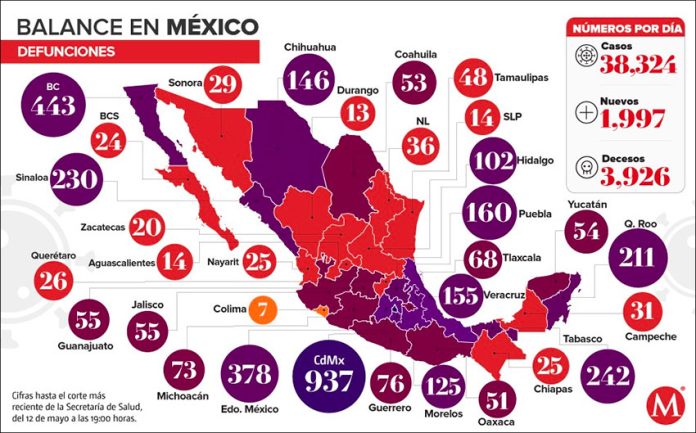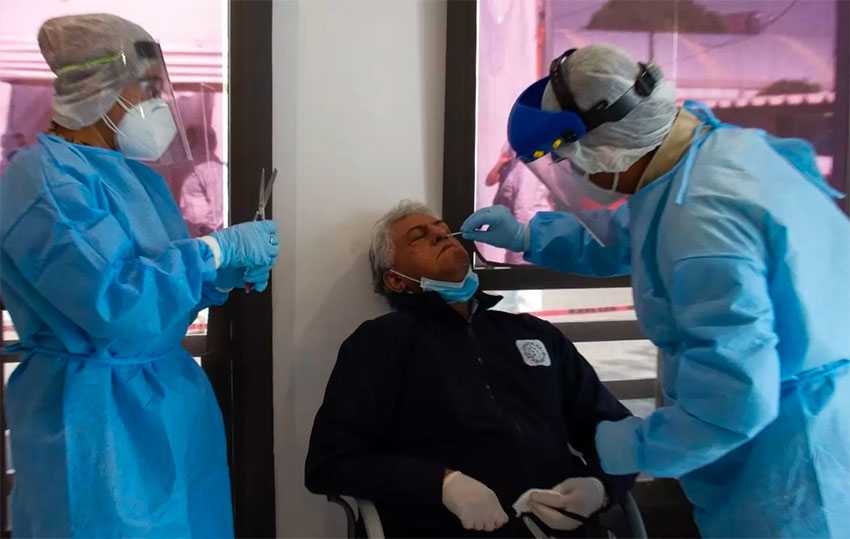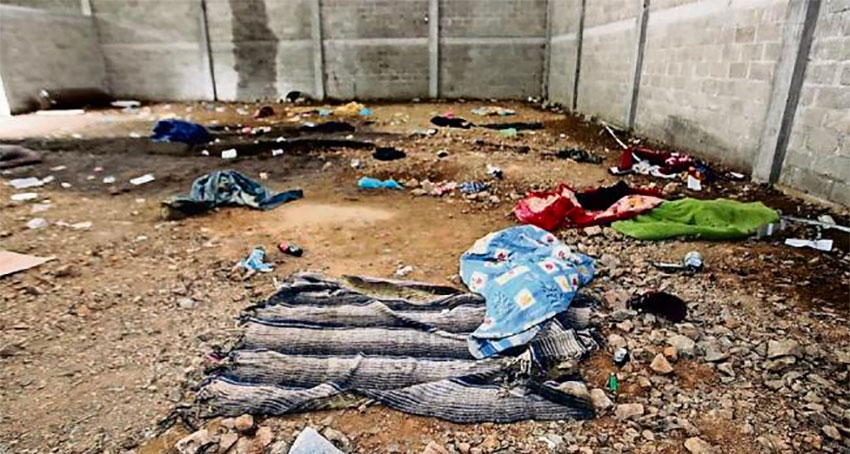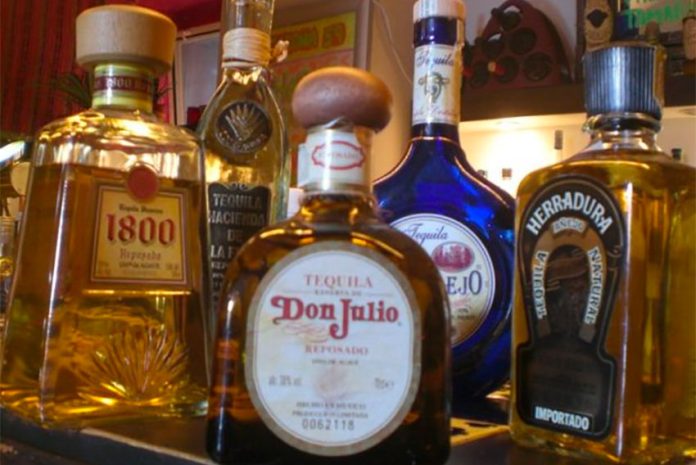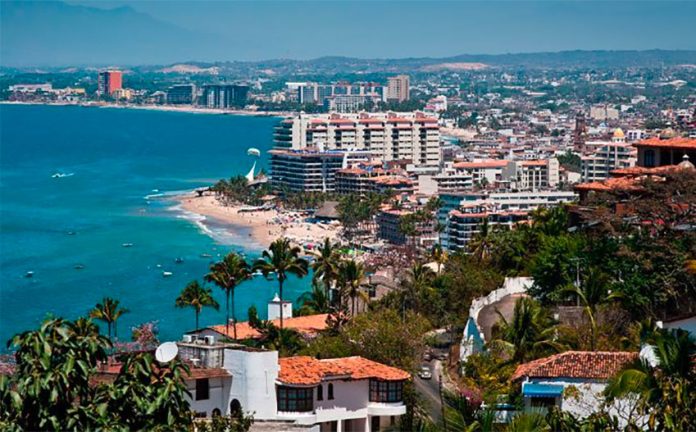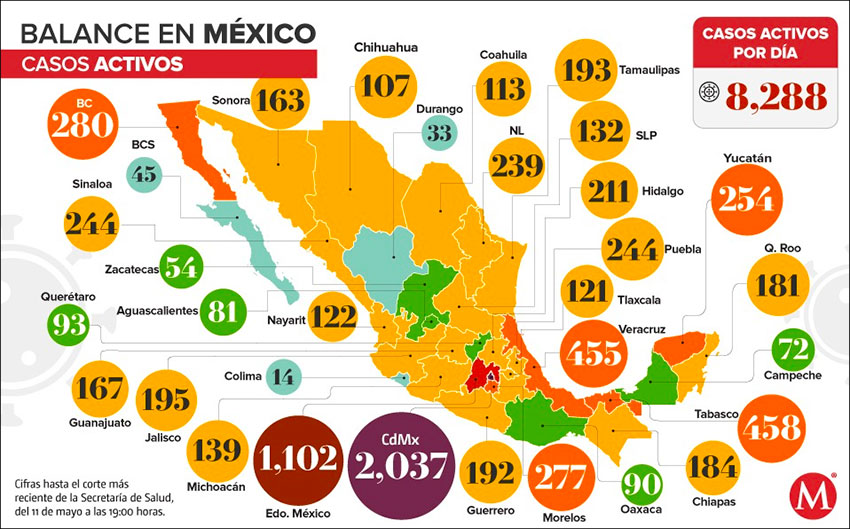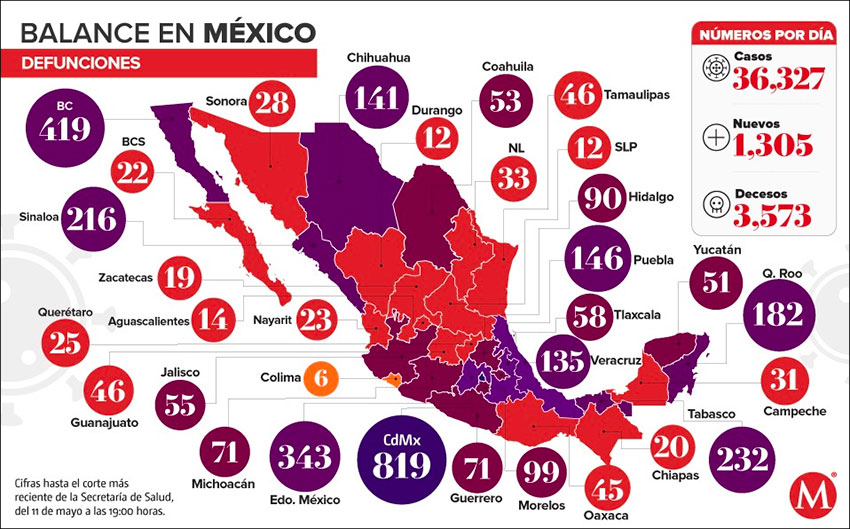Mexico recorded its biggest single-day increase to both its coronavirus case tally and death toll on Tuesday as the country enters its fourth week of phase three of the pandemic.
The federal Health Ministry reported 1,997 new Covid-19 cases, increasing the total number of accumulated cases to 38,324. It also reported 353 additional deaths, lifting the death toll to 3,926.
The numbers for new cases and deaths exceeded those recorded on May 7 when the Health Ministry reported 1,982 of the former and 257 of the latter.
Director of Epidemiology José Luis Alomía said that 8,817 cases are currently considered active, an increase of 528 compared to Monday when the number of active cases declined for the first time in 20 days.
He told reporters at the nightly coronavirus press briefing that there are also 22,980 suspected cases of Covid-19 across the country and that more than 142,000 people have now been tested. Just under 20,000 people confirmed to have Covid-19 have now fully recovered.
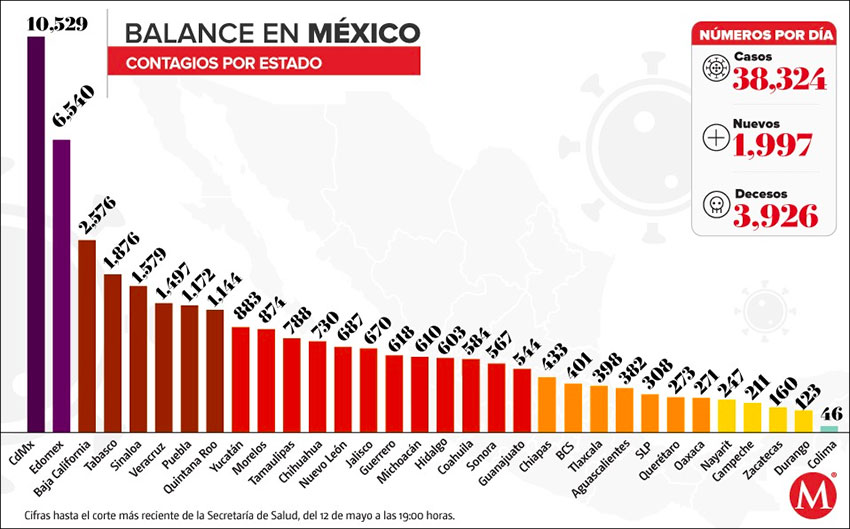
In the three weeks since the government declared the start of phase three of the pandemic, Mexico has recorded 29,552 cases, 77% of the total, and 3,214 deaths, 82% of the total number of coronavirus-related fatalities.
More than 10,000 coronavirus cases have now been detected in Mexico City since the beginning of the pandemic and the capital also leads the country for active cases with 2,170.
Mexico City’s two most populous boroughs, Iztapalapa and Gustavo A. Madero, rank first and second, respectively, among Mexico’s more than 2,400 municipalities for both accumulated and active cases. Iztapalapa has now recorded more than 2,000 cases while 1,351 have been detected in Gustavo A. Madero.
Eight other boroughs in the capital – Tlalpan, Álvaro Obregón, Coyoacán, Cuauhtémoc, Iztacalco, Xochimilco, Venustiano Carranza and Miguel Hidalgo – have recorded more than 500 cases.
México state has the second highest number of accumulated and active cases among the country’s 32 federal entities, with 6,540 of the former and 1,176 of the latter. Several México state municipalities that are part of the greater Mexico City metropolitan area have recorded high numbers of cases.
Baja California ranks third for accumulated cases, with more than 2,500, while Veracruz has the third largest active outbreak in the country, with 508 cases.
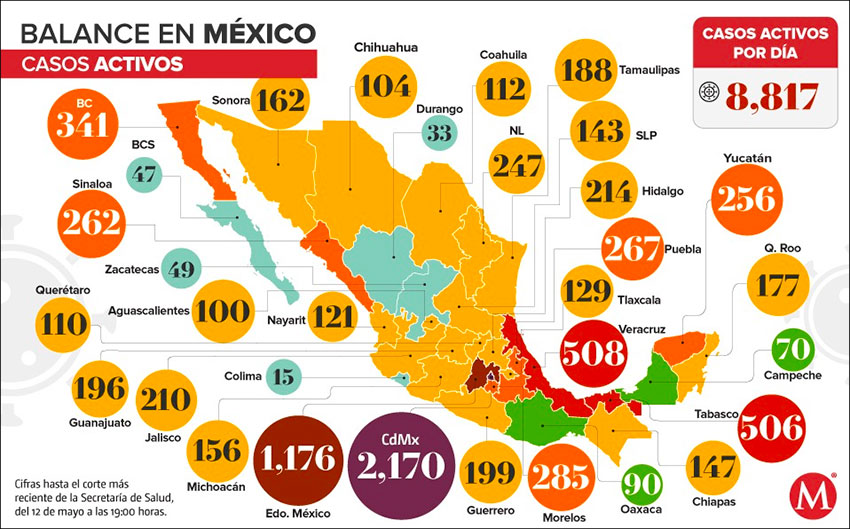
Four states are close to eliminating coronavirus within their borders, with less than 50 active cases each, according to official data. Colima has just 15 active cases, Durango has 33, Baja California Sur has 47 and Zacatecas has 49.
Colima is the only state in the country to have recorded fewer than 10 fatalities, with seven reported as of Tuesday.
At the other end of the scale is Mexico City, where 937 people have now lost their lives to Covid-19. Baja California has the second highest death toll, with 443 fatalities, followed by México state and Tabasco, where 378 and 242 people, respectively, have died after testing positive.
Just under 70% of the almost 4,000 fatalities were men. In addition to the confirmed Covid-19 deaths, there are 244 fatalities that are suspected of having been caused by the disease.
If a suspected Covid-19 patient dies before he or she is tested, and is not tested subsequently, a committee of medical specialists analyzes the case and makes a decision about whether the fatality should be attributed to the disease and added to Mexico’s official coronavirus death toll.
Based on the number of Covid-19 cases and deaths confirmed by Tuesday, Mexico’s fatality rate is 10.2 per 100 cases, a figure that has increased by 1 over the past two weeks. The global fatality rate is 6.9 per 100 cases.
Most of the Covid-19 patients who have died in Mexico had underlying health conditions, the most prevalent being hypertension, diabetes and obesity.
Source: Milenio (sp), El Universal (sp)
